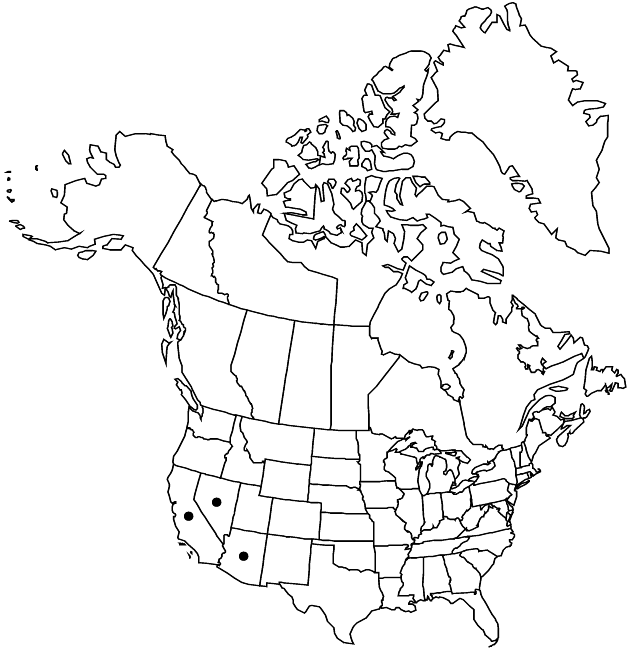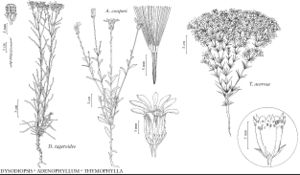Difference between revisions of "Adenophyllum cooperi"
Sida 11: 376. 1986.
Basionym: Dyssodia cooperi A. Gray
Treatment appears in FNA Volume 21. Treatment on page 239.
FNA>Volume Importer |
FNA>Volume Importer |
||
| Line 49: | Line 49: | ||
|publication year=1986 | |publication year=1986 | ||
|special status= | |special status= | ||
| − | |source xml=https://jpend@bitbucket.org/aafc-mbb/fna-data-curation.git/src/ | + | |source xml=https://jpend@bitbucket.org/aafc-mbb/fna-data-curation.git/src/8f726806613d60c220dc4493de13607dd3150896/coarse_grained_fna_xml/V19-20-21/V21_583.xml |
|tribe=Asteraceae tribe Heliantheae | |tribe=Asteraceae tribe Heliantheae | ||
|subtribe=Asteraceae (tribe Heliantheae) subtribe Pectidinae | |subtribe=Asteraceae (tribe Heliantheae) subtribe Pectidinae | ||
Revision as of 15:35, 18 September 2019
Perennials or subshrubs, 30–50+ cm. Leaves mostly not lobed, blades oblanceolate to ovate, 8–25 × 4–8 mm (bases sometimes toothed or obscurely lobed, oil-glands 1–2 pairs near base, 1 near tip, each leaf). Peduncles 60–150 mm. Calyculi of 12–22 linear-attenuate, gland-bearing, bractlets 5–8 mm. Involucres campanulate to obconic, 15–18 mm. Phyllaries ca. 20, lanceolate to linear, separating in fruit. Ray florets (0–)7–13; corollas yellow-orange, becoming red-orange; tubes 5 mm, laminae 8–10 × 2.5–4 mm. Disc florets 50–80+; corollas yellow, 8–10 mm. Cypselae 5–7 mm; pappi of 15–20 scales 7–10 mm, each comprising 5–9, basally connate bristles. 2n = 26.
Phenology: Flowering spring–fall.
Habitat: Sandy and gravelly soils of washes and alluvial fans in deserts
Elevation: 0–1300 m
Distribution

Ariz., Calif., Nev.
Discussion
Selected References
None.
Lower Taxa
None.
